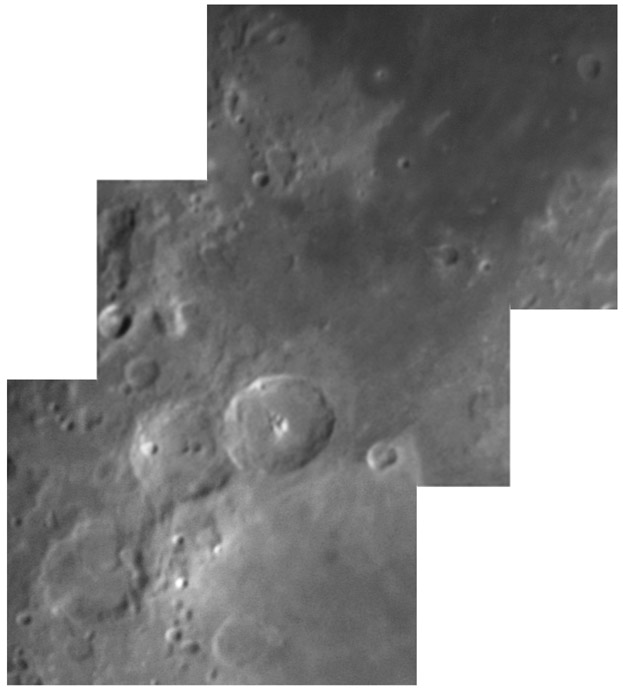
Setup: 8" SCT f/10, 1.8x barlow, IR reject filter, ToUcam webcam, 0.32 "/pixel
Webcam settings: 1/33 sec, 5 FPS, brightness=100%, gamma=10%, b&w mode=ON, 640x480 pixels, 'color optimized non-raw' (CONR) mode
Processing: K3CCDtools, Mira6, Photoshop7.
This is my first attempt at lunar imaging with a webcam. My kids were with me in the observatory, we talked about the moon and telescopes while I fiddled with the setup - very enjoyable for an astro-dad! The air turbulence was pretty bad and I probably shouldn't have used the barlow which should be good for obtaining the fullest resolution, but only when the seeing is good enough. The sequence above was taken at 16:23-16:27 UT, just before clouds came rolling in. Focussing was done by hand with the manual SCT knob using the lunar landscape as a gauge. I acquired one 45 sec sequence for each FOV, the sharpest 3-4 images were then manually selected among the 25 best and stacked in K3CCDtools. Flatfielding wasn't done, I manually removed one dust donut.
The large crater with prominent central peak is Theophilus, diameter 100 km. The smallest visible craters have a diameter of ~5 km, estimated optical resolution is ~1.5 arcsec after a mild sharpening.
Next time, if the seeing is good I could stick with the barlow lens but might get a bit sharper by using
a SBIG green filter to minimize effects of atmospheric dispersion. If the seeing is not so good - like this time - I
should use the IR reject filter, but avoid the barlow. I could also acquire longer sequences (~90 sec) to get
more sharp images. Finally, the focussing might get a bit better if I used a star and the DF-2 focusser (take a
stellar sequence just after focussing and after final lunar image to document FWHM and focus drift).
Here's my main page where you can see more of the pictures I have taken so far.
Comments greatly appreciated! (mikael@leif.org)